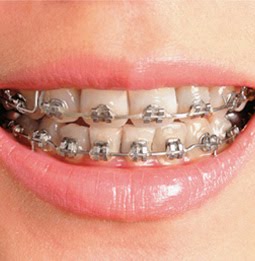Time For Braces
 More than four million people in the United States and Canada see orthodontists hoping for that perfect smile. While you might think you have to wait until your child loses his or her baby teeth, that’s not the case. The best age to go might surprise you.
More than four million people in the United States and Canada see orthodontists hoping for that perfect smile. While you might think you have to wait until your child loses his or her baby teeth, that’s not the case. The best age to go might surprise you.
When Nick was just nine, his mother noticed his teeth were crowded. So she brought him to the orthodontist. This may sound young, since kids that age still have baby teeth, but orthodontists suggest even earlier.
“By the age of seven, they have in their first permanent molars and their upper and lower incisors of the front teeth”, “So we can start to see if they have skeletal problems. What we do a lot of times is kind of manage the space that they have in their mouth.” Says an orthodontist.
For Nick that meant widening the upper jaw to allow more room for his permanent teeth and to align the upper and lower jaw. An early start doesn’t mean a child won’t need braces, but it does make treating big problems easier.
“We’d rather watch them as they’re developing so we can head off problems. Once it’s happened, it’s a lot harder to deal with then,” says orthodontist.
How do you know if it’s time to bring your child to the orthodontist? Some signs to look for are:
Teeth that look crowded or overlap
Difficulty biting or chewing
A jaw that looks out of line
Grinding or clenching teeth
Teeth that fall out too early or baby teeth that stay in too long
Was the early treatment worth it? Well, Nick still needs braces, but it’s the difference between braces correcting these teeth… and these.
Debi is Nick’s mother. “They’ve done wonders with him already,” she says. “It wasn’t that much pain, and he’s going to have a great smile.”
The American Association of Orthodontists says you can even start bringing your kids to see an orthodontist as young as two or three years old. Furthermore, doctors often treat patients in their 50s and 60s, too.

